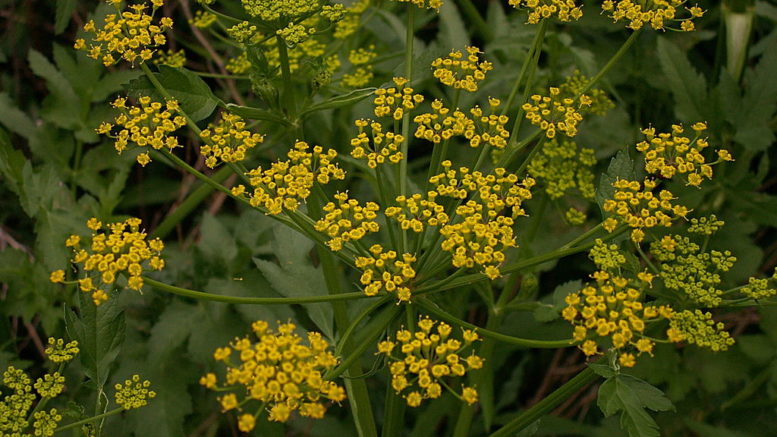By Seth DuChene
Editor
Lennox and Addington County council is taking the L&A Stewardship Council up on its offer to take a close look at the county’s ongoing roadside spraying program to combat wild parsnip.
At its regular meeting last night, council ultimately accepted a proposal by LASC member Lawrence O’Keeffe that would see the stewardship council work with a number of outside partners — including Queen’s University and St. Lawrence College — over the next two-and-a-half years to conduct a detailed scientific review of the spraying program.
O’Keeffe told council that the plan would not require any financial commitment from L&A County.
In his presentation, O’Keeffe said the science surrounding such roadside spraying programs is “indeterminate on a number of levels,” particularly as it relates to their impact on the ecological and geological conditions present in L&A County.
“As you all know, this area has some unique geological features, such as Karst topography and fractured limestone formations, and there some opponents who feel spraying programs may have very adverse effects, especially in regions like ours,” said O’Keeffe.
O’Keeffe said that those studies would be presented to L&A County council, regardless of whether the findings confirm or contradict concerns that have been raised about these spraying programs.
L&A County council opted to embark on the spraying program in March following a staff presentation on the issue. While the county and its constituent municipalities have been inundated with public complaints regarding the spread of wild parsnip, those municipalities also have a legal obligation under provincial regulation to eradicate noxious weeds, including wild parsnip.
The LASC came forward with concerns about the spraying program shortly after it was announced.
O’Keeffe said that the goal of the study will be to give L&A County and other jurisdictions a better understanding of the impacts of these spraying programs. “It is our intent over the next two-and-a-half years to look at this much more closely in an attempt to inform public policy decision-making and rural landowners regarding control options for hazardous terrestrial plant species for the purpose of preventing damage to biodiversity and the environment,” he said.
Council voted to receive the presentation and endorse the stewardship council’s approach. Council also forwarded the LASC’s proposal to its technical advisory committee for roads and bridges — which has staff representation from not only L&A County but also each of the county’s four lower-tier municipalities — for further discussion.
“We feel we’re providing a unique opportunity for all of us to become better informed and become better environmental stewards,” said O’Keeffe.

